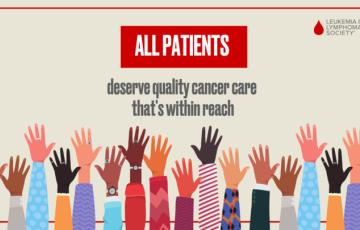Search Results
Targeting HSP70 to Immune Effector Cells to Overcome the Immune Suppressive Myeloma Microenvironment
Development of a strong anti-cancer immune response requires coordinated action of the innate and adaptive parts of the immune system, but cancer cells alter their environment to suppress virtually every step in this process, which promotes cancer progression and treatment resistance. One promising strategy could be to target Heat shock protein 70 (HSP70), which plays an important role in both innate and adaptive immunity, and we therefore developed a series of novel antibodies to HSP70, one of which cured mice of multiple myeloma.Dissecting the biology and exploiting the dependency of myeloma cells on P300/CBP
In recent work of our collaborating labs, the protein acetyltransferases P300 and CBP emerged as potent and preferential dependencies for multiple myeloma (MM) based on genetic depletion, catalytic inhibition or chemical degradation studies. Our current project will define distinct vs. redundant molecular and biological functions of P300/CBP in MM, identify the mechanisms of resistance to their inhibition/degradation and exploit these findings to develop new therapeutic modalities to treat MM.
Sharon
Sharon Clark was diagnosed with multiple myeloma in 2015 after experiencing unusual symptoms like aches and fatigue. Her treatment has included multiple courses of oral anti-cancer medication, countless injections, infusions and hospitalizations, a stem cell transplant and two spinal surgeries to repair cracked bones caused by the myeloma. She continues to be treated with an LLS-supported oral anti-cancer therapy to keep her cancer in remission.
Esther
In November 2011, I was diagnosed with multiple myeloma and received a stem cell transplant in April 2012. After recovery, I continued medical care with my local oncologist.
In the summer of 2014, my lab results caused concern. After two bone marrow biopsies, I was diagnosed with acute lymphocytic leukemia (ALL) in January 2015. My doctor was shocked. The plan of treatment was chemotherapy and eventually a bone marrow transplant. Due to complications from chemotherapy treatment, the bone marrow transplant was off the table.
Functional dissection of heterogeneity of responses to CAR T cells using Spatiotemporal Image-guided Genomic and Cellular Analysis (SaGA) in myeloma
Despite remarkable progress in the last 20 years, multiple myeloma remains an incurable disease. In recent years, 2 CAR T cell products that target BCMA on the myeloma cell have been approved. These products result in remarkable initial responses however the duration of these responses has been disappointing. In this proposal, we will take a novel approach to isolate and characterize myeloma cells that interact with CAR T cells but are not killed by them as a potential resistance mechanism.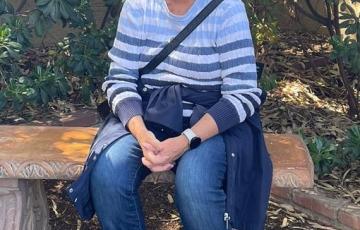
Pat
I was diagnosed with plasma cell dyscrasia (PCD) in September 2021. My condition was monitored, and more tests were conducted. In November 2021, my diagnosis was changed to intermediate-risk smoldering multiple myeloma (SMM). In July 2023, my diagnosis was changed to monoclonal gammopathy (MGUS). With the multiple myeloma not having achieved remission, I was diagnosed with IgG kappa myeloma, a type of MGUUS, in August 2023. Since starting treatment last October, my M-spike has slowly decreased, and my progress looks good.

Paula
In the 1990’s, I was diagnosed with benign monoclonal gammopathy. In April 2013, I was experiencing severe back pain that lead me to the ER. The results of the x-rays lead me to seek medical treatment from a hematologist/oncologist. The bone marrow biopsy result confirmed multiple myeloma.
Refractory and Relapsed
Some patients with myeloma have refractory disease. Refractory myeloma is cancer that does not respond to treatment. After a time, almost all myeloma patients will experience relapse, which means the cancer returns after a successful course of treatment. The treatment for relapsed and refractory myeloma is affected by many factors including previous therapy, rate of relapse, patient health, and genetic abnormalities.
Treatment for Relapsed and Refractory MyelomaTreatment for relapsed or refractory myeloma may include:

Shandra
I was diagnosed with multiple myeloma (MM) two years ago. I had never heard of this cancer until I was diagnosed. I found out I had cancer when my T2 vertebra had fractured in my back, and they called the fracture a pathological fracture, meaning an injury didn’t cause it. Every test was run, and it was confirmed that I had cancer. Still in denial, I wanted a second opinion. A second opinion was done, and I had to accept it because I have children ages 19, 10, and 6. I wanted to be here with them as long as possible.
Tina
My husband was diagnosed with multiple myeloma (MM) last year, and I saw this and thought it would be a nice fundraiser to help in the journey for research and to help with finding cures for these cancers.
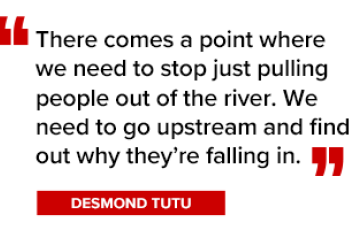
Improving Blood Cancer Survival Takes More than New Drug Discovery
In my years as a practicing hematologist-oncologist and now as chief medical officer of The Leukemia & Lymphoma Society (LLS), I’ve met many blood cancer patients who worry about how they’ll afford their treatment on top of day-to-day expenses like rent and groceries. LLS offers financial assistance for qualifying blood cancer patients and families
Tommy
My name is Tommy Cummings, and I have been a survivor for 18 years now with multiple myeloma and thank God and LLS for the help they do for all of us who rely on them for help in battling this disease.

Sandra
I'm a survivor of multiple myeloma and MDS. Now I just want to raise awareness for the cause its seriousness.
Having both these diseases is tough, but I'm trying to take it all in and The Leukemia & Lymphoma Society offers wonderful support.

Nancy
I was diagnosed with multiple myeloma in 2008. For a year, I was in the “watch and wait” category with no treatment until the disease progressed. In April 2009 I progressed to “active disease” and began treatments followed by an autologous stem cell transplant in January 2010.
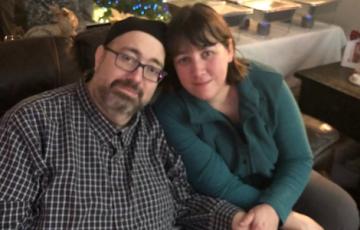
Paul
My husband's story began in July 2018, when he suddenly became ill. I rushed him to the ER. The shocking diagnosis, multiple myeloma. Three weeks prior to his hospitalization he had a physical with blood work, all was normal.

Suzanne
My mother was diagnosed with multiple myeloma (MM) in February 1987. She passed away in December 1997. I was diagnosed with MM in February 2017. My diagnosis was not only a surprise but daunting because I was my mother’s caregiver and experienced what she faced battling this disease. I’m currently undergoing treatment with the bispecific drug Teclistamab with success. The Leukemia & Lymphoma Society (LLS) has provided me with educational and financial assistance, so I greatly appreciate this organization.
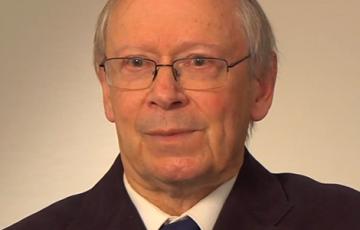
Dr. Adams
Jerry M. Adams, Ph.D., leads an LLS Specialized Center of Research grant.
His team is investigating apoptosis, the nature process of cell death. When apoptosis goes wrong it can lead to proliferation of cancer cells. It cells fail to die when they are supposed to they can develop into leukemia, lymphoma or multiple myeloma, and become more resistant to treatment. To improve treatment, the team is studying new drugs, used either alone or in combination with other therapies, to flip on the cell death switch.

Jane
In 2008, I retired from teaching art, mostly because I was feeling tired all the time and didn’t want the program I was running to suffer because I couldn’t keep up. I figured it was old age. I was enjoying my first full year of retirement when I woke up with a backache. After two months of tests, in July 2010, I was diagnosed with multiple myeloma, a treatable but not yet curable blood cancer in the plasma cells of the bone marrow.

Vonshel
Hi, my name is Von, and back in 2008, I was diagnosed with breast cancer. I didn't want to die, but prayer and God sent me right to the perfect doctor: Dr. Moran from Brunswick, GA. I got through chemotherapy and radiation with a breeze, and I'm now in remission for 13 years.

Andreas Strasser, Ph.D., MSc, FAA
A Pioneering Researcher Developing Targeted Therapies for Leukemia, Lymphoma and Myeloma
A cancer researcher trained in cell biology, immunology and molecular oncology, Dr. Strasser has made major contributions leading to discoveries that have found that defects in cell death can cause cancer and impair responses to chemotherapy. With this knowledge, his research team is able to develop new treatments.
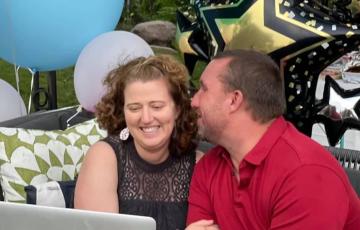
Amanda
Amanda was a Woman of the Year candidate this past spring, raising over $186,000 for The Leukemia & Lymphoma Society (LLS).
She is a multiple myeloma (MM) survivor and just received the newly approved for MM, CAR-T cell treatment, 5 days before the fundraising campaign finale.
LLS first met Amanda when she was pushed through the front doors of the office in her local region, in a wheelchair.

Mike
My personal story with blood cancer started in 2020 but nobody really knew how long it was brewing. A day came when back spasms started raging and my Primary Care Physician (PCP) sent me to physical therapy (PT). It didn’t take more than 1 visit to PT to know that was a bust and finally my PCP sent me to the Hematologist. This is where my blood cancer story becomes reality, in no more than 5 minutes, the Hematologist sent me directly to the Huntsman Cancer Institute.

Doug
I have always been a builder. Professionally, I am an architect. You could say that I’ve spent my life building spaces where people could grow. I never imagined, however, that I would someday have to rebuild my own. In February 2015, after experiencing months of excruciating and debilitating back pain that doctors mistakenly attributed to deteriorating lower lumbar discs, I had an MRI that revealed multiple vertebral compressed fractures.

